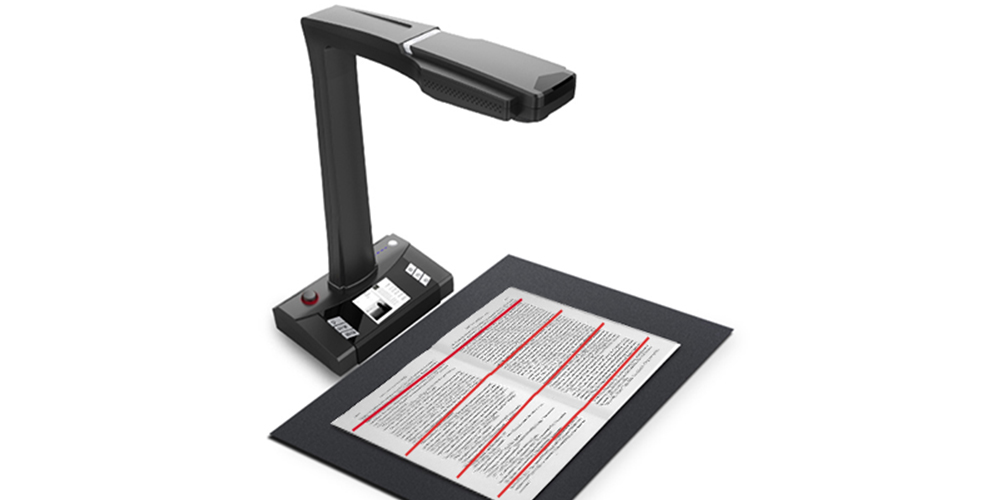A book scanner is a device consisting of three parts: camera, controller, and scanner rig. It is designed to digitize book pages. A company or business needing extra space or wanting to expand their space can opt for book scanning. Book scanning helps to free up space by compressing books into files you can access digitally. It also maintains the book quality, and multiple users can access the digital archive simultaneously. In this post, we discuss how a book scanner works and its specifications.
How Does a Book Scanner Work?
The operation of book scanners varies depending on the manufacturer and equipment used. However, there are general steps that they all go through to facilitate the book scanning process.
Have your book facing up on the glass plate or book cradle, then place your material on it. The material can either be a plastic or glass sheet that is pressed against the book page to keep it flat. You need to open the book page for a manual scanner, but the pages are flipped for your automatic scanners. After opening the book to the first page, press the scan button to capture the images or text of that page.
The scanning software will then take the scan and adjust the images by cropping and editing them. After the cropping, the images are separated, and you can go ahead and turn to the next page. Again, press the scan button and repeat the process till the entire book is scanned.
What are the Qualities of a Good Book Scanner?
Sourcing for a good book scanner is a challenging task. Various types are available to choose from, like manual automatic or semi-automatic book scanners. Excellent book scanning requires a professional scanner to provide high-end results. Below are qualities you need to look out for before buying a book scanner.
1. Resolution of the Scanner
The resolution level of a document or image determines how clear it appears or how well you can read the content. The optical resolution for book scanning should be around 200dpi for clear content and easy reading. High-quality images need a higher resolution ranging between 400 and 600dpi.
2. Quality
The scanning quality in terms of color and lighting should be consistent throughout the book. Despite the different content on each page, they should all appear similar. There should be a balance of lighting in all pages as well as their backgrounds.
3. Productivity levels
The rate at which each book is scanned determines how many will be scanned at a particular time. Automatic scanners are faster than manual scanners. However, automatic scanners are not suitable for very damaged books.
4. Cost
The price of a book scanner will vary depending on the type, quality, size, speed, and productivity rate. Choose what is in your price range but don’t compromise on the top qualities.
Conclusion
Book scanners are great devices for the protection of a book’s integrity. Considering the qualities above, go for the best book scanner for high-quality images and content for your digital archive.


